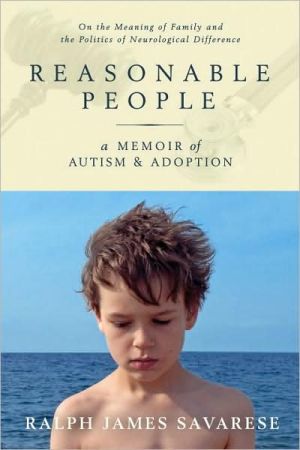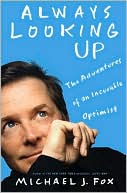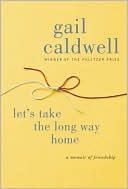Reasonable People: A Memoir of Autism and Adoption: On the Meaning of Family and the Politics of Neurological Difference
Watch an interview with DJ on CNN\ Listen to Ralph Savarese's interview on NPR's "The Diane Rehm Show"\ Visit the book's website: www.reasonable-people.com\ "Why would someone adopt a badly abused, nonspeaking, six-year-old from foster care?" So the author was asked at the outset of his adoption-as-a-first-resort adventure. Part love story, part political manifesto about "living with conviction in a cynical time," the memoir traces the development of DJ, a boy written off as profoundly...
Search in google:
Watch an interview with DJ on CNNListen to Ralph Savarese's interview on NPR's "The Diane Rehm Show"Visit the book's website: www.reasonable-people.com"Why would someone adopt a badly abused, nonspeaking, six-year-old from foster care?" So the author was asked at the outset of his adoption-as-a-first-resort adventure. Part love story, part political manifesto about "living with conviction in a cynical time," the memoir traces the development of DJ, a boy written off as profoundly retarded and now, six years later, earning all "A's" at a regular school. Neither a typical saga of autism nor simply a challenge to expert opinion, Reasonable People illuminates the belated emergence of a self in language. And it does so using DJ's own words, expressed through the once discredited but now resurgent technique of facilitated communication. In this emotional page-turner, DJ reconnects with the sister from whom he was separated, begins to type independently, and explores his experience of disability, poverty, abandonment, and sexual abuse. "Try to remember my life," he says on his talking computer, and remember he does in the most extraordinarily perceptive and lyrical way.Asking difficult questions about the nature of family, the demise of social obligation, and the meaning of neurological difference, Savarese argues for a reasonable commitment to human possibility and caring. Publishers Weekly Savarese, a writer and professor at Grinnell College, writes a moving account of his family's adoption of DJ, an abused, autistic youngster. Throughout, he describes the process of helping DJ communicate with the world and discusses larger issues of the rights of people with neurological differences. Savarese's wife, an autism professional, first encountered DJ when he was only two and a half; by the time they could adopt him, three years later, he'd lived in several homes and been badly abused in foster care. Because he didn't speak, people were unaware of what he'd suffered; some doubted he even could suffer, believing the myth that the autistic have no sense of self or others. As the Savareses worked with their son, teaching him to sign and to use "facilitated communication" with a keyboard, they learned more about his very deep thoughts and feelings. As they fought to include him in mainstream classrooms, they also struggled with his emerging demons: his memories of abuse, his pain from parental abandonment. Savarese writes with passion and humor, careful to include extensive excerpts from DJ's typing, so readers get a sense of his remarkable growth. (May)Copyright 2007 Reed Business Information
Introduction: Some Get Eaten xiPart ISevere and Profound 3More 31Have You Tried In Vitro? or What's in a Name? 57He's So Fine 88Guidance 117Read the Book 149Poking 178Have You Missed Living with Me? 216Part IITry to Remember My Life 241Buttoned-up Shirts 266Throw Dad Away 289Charlie Needs Our Help 315The Sad Hurt Great Brother 343Grief Isn't Easy 373Reasonable People 401It's My Story! 432Notes 443Acknowledgments 461About the Author 463
\ Publishers WeeklySavarese, a writer and professor at Grinnell College, writes a moving account of his family's adoption of DJ, an abused, autistic youngster. Throughout, he describes the process of helping DJ communicate with the world and discusses larger issues of the rights of people with neurological differences. Savarese's wife, an autism professional, first encountered DJ when he was only two and a half; by the time they could adopt him, three years later, he'd lived in several homes and been badly abused in foster care. Because he didn't speak, people were unaware of what he'd suffered; some doubted he even could suffer, believing the myth that the autistic have no sense of self or others. As the Savareses worked with their son, teaching him to sign and to use "facilitated communication" with a keyboard, they learned more about his very deep thoughts and feelings. As they fought to include him in mainstream classrooms, they also struggled with his emerging demons: his memories of abuse, his pain from parental abandonment. Savarese writes with passion and humor, careful to include extensive excerpts from DJ's typing, so readers get a sense of his remarkable growth. (May)\ Copyright 2007 Reed Business Information\ \ \ \ \ Library JournalA controversial therapy for autism, facilitated communication (FC) first gained attention in the early 1990s but was discredited because of the indeterminable influence of the facilitator. It most commonly involves guiding the hands of an autistic person over a keyboard to help him/her type out messages. The father of a severely autistic teenage son, Savarese (literature, Grinnell Coll.) is a proponent of FC and offers a memoir both of his son's background and of his experience with the therapy. The best part of the book vividly chronicles the former--before being adopted, D.J. was abandoned by his birth parents and suffered abuse in the foster care system. Savarese then explores D.J.'s development using FC and includes phrases and passages he typed (the potential interference of the facilitator is not easy to ignore when we see, e.g., D.J. referring to his visit to Rome as a "trip of a lifetime"). While Savarese shows the positive aspects of FC, he fails to demonstrate in-depth how that method could be used by parents and educators. Nevertheless, readers will find the elements documenting the foster care system worthwhile. Recommended for academic libraries with comprehensive disability collections.\ —Corey Seeman\ \ \








